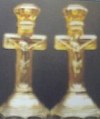Carnival Glass 101 | home Quick Reference to Carnival Glass Patterns on This Site
Tree Bark
TREE BARK
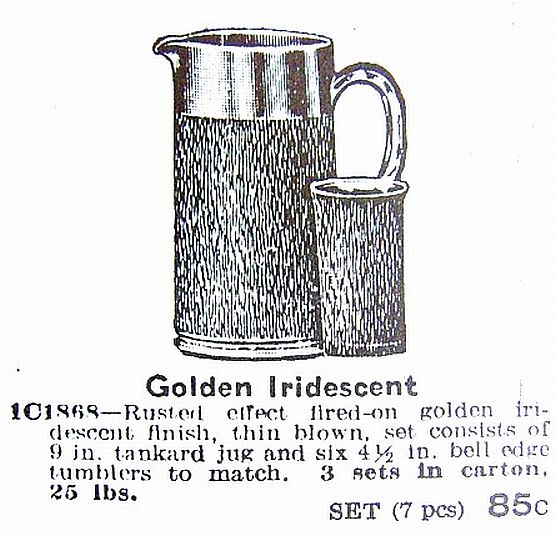 |
|
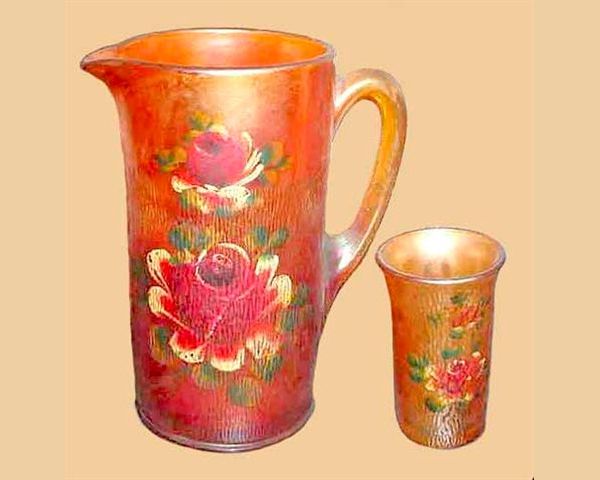 |
|
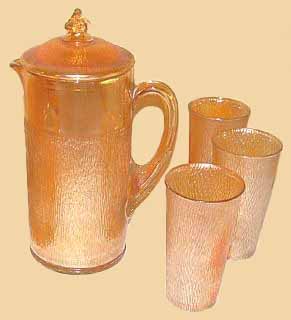 |
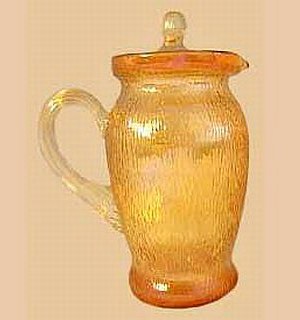 |
TREE BARK Water Set-
|
Ovoid-shapedTREE BARK
Pitcher - 9 tall.
|
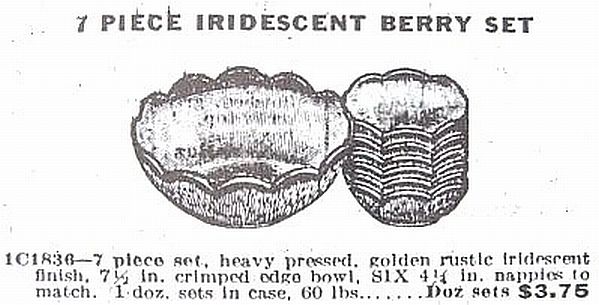 |
|
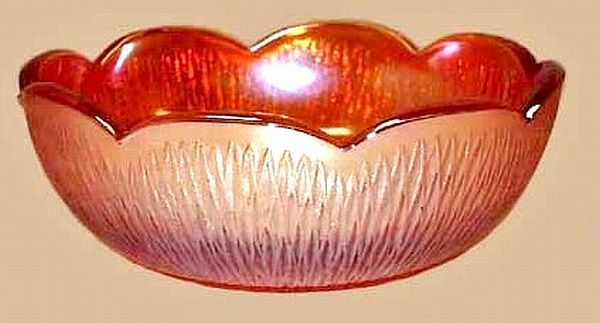 |
|
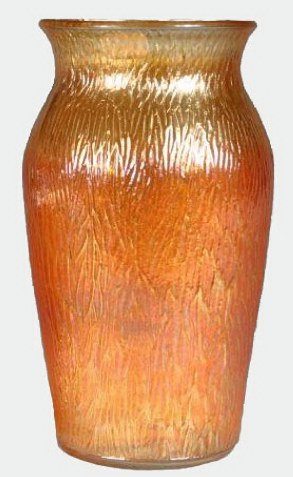 |
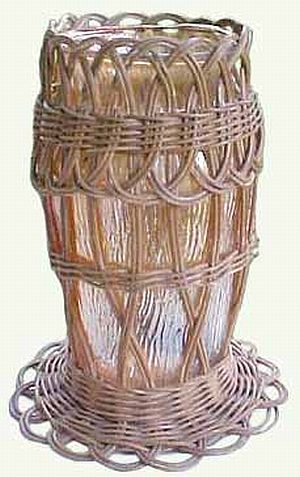 |
Wicker over TREEBARK Vase-8.5 in. tall. Vase cannot be removed from wicker-1920s-1930s style.
|
|
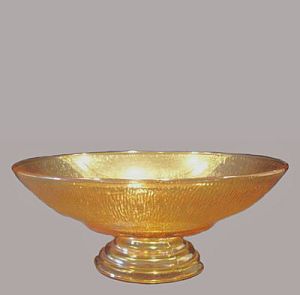 |
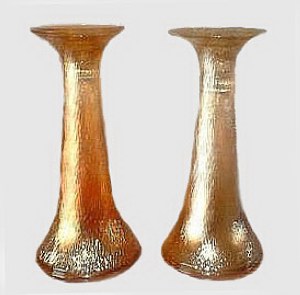 |
8.75 in. Pedestal Bowl
|
TREE BARK Candlesticks
- 7.5 in. tall.
|
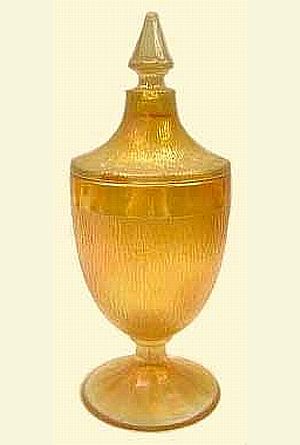 |
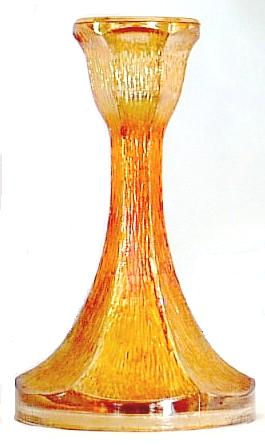 |
TREE BARK 9.5 in.
Covered Candy Jar.
|
TREE BARK Candlestick
- 7 inches tall.
|
Considered a Depression Era design, this pattern does not impress Carnival Glass collectors to any large degree. Wholesale catalogs did not display the shapes until 1927. The same water set ads appeared in the April 1929 issue of Butler Brothers catalog. Lack of intricate designs such as was emphasized during the earlier 1900s examples in iridized glass of various colors, combined with overwhelming amounts of this primarily marigold element, indicated a basic utilitarian purpose.
The late Kay Riley was an intense researcher/collector of Jenkins Glass. Having lived in Arcadia, IN., she knew former employees of the company, collaborated with James Measell on his written reports surrounding Jenkins Glass, along with contributing her talents on the subject to Joyce A. Hicks, who wrote her book in 1988, called JUST JENKINS. Kay's personal collection was immense, and we saw no evidence of a Tree Bark pattern in those pieces.
Our partner, Donna Adler has been collecting Indiana Glass since she was a teenager, avidly following their patterns for nearly forty years. (You can peruse her catalog pages and documented history of Indiana Glass on this site - The Indiana Glass Site.) There are no leading indicators that Jenkins or Indiana Glass ever produced a Tree Bark pattern.
Carl O. Burns notes that many years ago he held a purple tankard Tree Bark pitcher. Rare examples of a lovely shade of aqua also exist, along with tumblers in aqua. Marigold is more prevalently found.
The ovoid-shaped pitcher with lid, mold-blown, having applied handle is seen less often than the tankard type. They are seen only in marigold. The ovoid-shaped vase in marigold was used for this pretty wicker “enhancement”. My grandmother owned one such vase during the late 30s, early 40s timeframe. A berry set and 7”- 8” plate, along with a cone-shaped vase and two types of candlesticks are known in marigold only. The covered candy containers are known only in marigold. Pedestal bowls are infrequently seen, but always in marigold.
We have researched a 1909 Imperial factory catalog, along with a later one called Catalog No. 104A. Neither of them display a Tree Bark pattern. The McKee book compiled by Sandra McPhee Stout offers no clue. The 1978 publication by Margaret and Douglas Archer offered insights into 1904-1938 Imperial Catalogs: 104F, 101D, Bargain Book and Catalog B, but alas, no Tree Bark Pattern.
Our conclusion is that Jeannette Glass and possibly Westmoreland provided the various shapes found in this familiar pattern. Should any of our viewers offer evidence in this direction or otherwise, we would be most happy to hear from you.
Dean and Diane Fry 06/09
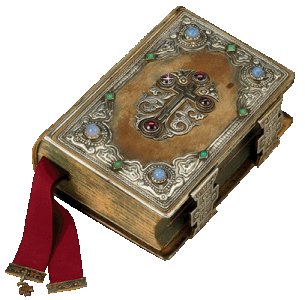






“Man is born to trouble, as the sparks fly upward.”
Believe it or not, this quote is from Job 5:7.
George Muller, a pastor and orphanage director in the 1800s would have had no trouble quoting this passage, for he read the Bible through 100 times. He said that he looked upon it as a lost day when he had not had a good time over the Word of God. The blessing received was wonderful. We don't need to feel guilty if we don't read the Bible as much as Muller did, but because it was given to us by God and is profitable for our spiritual growth (2 Timothy 3:16-17), we could all benefit from reading it through at least once.
Read the Bible to be wise, believe it to be safe, practice it to be holy.
Several years earlier, Paul had warned Timothy that the last days would be characterized by false teachers and apostasy (1Timothy 4:1-2)
In 2 Timothy 3:13, Paul notes that the wickedness and deception will worsen.
Are we “there” yet?








Should you care to contact the Frys, their email address is:
Search Carnival Glass 101
back to Carnival Glass 101
Our other sites you may enjoy:
Everything you EVER wanted to know about Indiana Glass
Great Reference for Newer Carnival Glass.
Complete Glassware Catalogs Available to Download
Questions? Comments? Suggestions? Broken Links? Corrections?
Your Friendly Webmaster is here to help!
